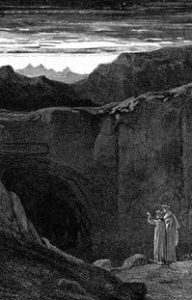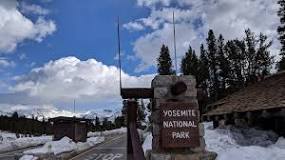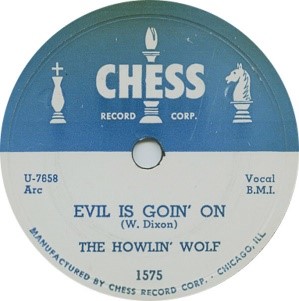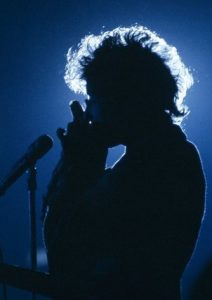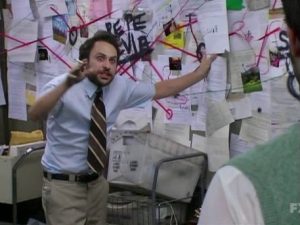By Tony Attwood
If we look at the lyrics of Dylan’s songs in the second half of the 1980s we see a very troubled writer, as the titles of the recent articles in this series suggest…
- 1984: Back to the old ways (again)
- 1985: Bob Dylan slips back into negativity
- 1986: The year Dylan slowly turned himself all around
- 1987/8: Possibly the greatest trilogy of compositions in Dylan’s career
- 1989: The menace emerges
And what’s more the trilogy of compositions that I rate so highly in 1987 consisted of three songs that reflected Bob’s clearly troubled mind: Political world, What good am I, Dignity.
I have also contributed to this site an earlier article on 1989: Bob Dylan stalked by the darkness in which I try to express my feeling that while the writing that year was, to my mind, brilliant, Bob was looking into very dark places to find his muse.
Of course this doesn’t apply to every song, but if we consider works such as Disease of Conceit, What was it you wanted, Everything is Broken, Most of the Time and Man in a Long Black Coat it is hard to think of a time when Bob has been so persistently dark.
There had to be a response to this – a lighter touch perhaps – for his own psychological well-being. And indeed that is what Bob moved into in 1990, with a totally different sort of song.
Within this search for a different mode of expression Bob was at least partially helped by the diversion of creating another Willbury’s album – an album which included Where were you last night which I would class as the best straight pop song Dylan has ever written.
Meanwhile the protest songs of the classic variety found a new outlet on the Never Ending Tour which had begun in 1987 and which is being cover in Mike Johnson’s brilliant series on this site. In addition Bob found a new type of protest song to write for his new recordings.
Now this thought keeps hammering at me not just because that’s how it sounded to me as I first started sketching out this series, but also because of what Mike Johnson wrote on this site as he started his three part review of the Never Ending Tour in 1990. He writes
“The performance I keep coming back to is that protest song to end all protest songs ‘It’s all right Ma.’ Not only the best of 1990, but maybe the best performance of this song since the flat, hard-driving 1964 performances. We have the swirling performances from the Rolling Thunder Tour, and the fast and furious versions from the Tom Petty years. Dylan stayed with this fast and furious version through the early years of the NET, and you won’t find a better performance of it than this one (02-07)…”
Now I must stress at this point that Mike and I don’t collaborate on these Never Ending Tour articles – they are all his work, not least because we live (literally) on opposite sides of the globe, and also because I don’t have any words to offer that could improve what Mike does one iota. So to set the scene, here, once again, is the performance from 1990 that Mike selected. As the saying goes, ‘I am the enemy of the unlived meaningless life.’
It’s all right Ma
By 1990, Bob’s classic protest songs had long since been written, and of course could be varied and re-presented on tour. But Dylan clearly also wanted to present the message again, and he needed a new way to do this. And what he did was utterly revolutionary. For Bob Dylan approached his theme not by returning to the style and approach of “Hollis Brown” and “It’s alright Ma” but by going in the opposite direction, taking childhood themes to point out the destruction of the past. Where there is a look back to Hollis Brown, it is via an expansion of the cause embedded in that song.
Also notable is that fact that many songs around this time had changing lyrics – as did Wiggle Wiggle from whence come the lines…
‘Wiggle till you’re high Wiggle till you’re higher Wiggle till you vomit fire’
This all seems fairly clear to me. In the aftermath of his Christian period Bob had slipped into a vision of doom, something which (as I have oft hinted up to this point) took as its starting point Making a liar out of me
I have noted at the start of this piece the articles that trace this period of darkness in Bob’s writing. Now, he had one more bash at trying to find a new way to express his horror of the world around him and amplify the message he expressed in “Making a liar”. Here is the list of songs from 1990 including the songs from the second Wilburys set which appear to contain a strong level of input from Bob. The songs near the end with the asterisks are Wilburys pieces which credit Dylan as co-composer, but which in my view are not songs to which he actively contributed much.
I am no longer trying to fit the songs into the subject titles that I have used before, since Bob had now moved on. Everything had changed.
- Handy Dandy (Contradictions)
- Cat’s in the Well (It’s all over, there’s no way out)
- 10,000 men (All is not as it seems)
- Unbelievable (We are being fed a pack of lies)
- Under the red sky (Our childhood has been obliterated)
- Heartland with Willie Nelson (Capitalism is destroying us)
- Wiggle wiggle (You have to learn to protest, and you need to do it in new ways)
- 2 x 2 (We have to change)
- The Devil’s been busy. (Everything is bad)
- If you belonged to me (Disconnected snapshots of life gone wrong)
- Inside Out (Environmental degradation)
- Seven Deadly Sins (Lost love)
- She’s my baby (50s style love song, a tribute to the genre)
- Where were you last night (lost love)
- New blue moon *
- Wilbury Twist *
- Poor House *
- Cool Dry Place *
- You took my breath away (Lost love? Tribute to Roy Orbison?)
In the earlier part of this series I contented myself by giving one or two word descriptions of the songs’ subject matter but by this period of Dylan’s life this had changed. Thus taking all the songs written up to 1977 the lead subjects were love and desire (56 songs), and lost love (43 songs). There were 17 songs about the environment and specific places and 11 blues songs. Now we were travelling in a very different direction.
If you have read my comments elsewhere you will know that to my mind the masterpiece in the Wilburys collection is “Where were you last night?” Yes it is a straight lost love pop song, a bit of male angst over a woman breaking a date. Hardly revolutionary stuff for Bob to get his teeth into, but compared with Disease of Conceit this is positively a lighthearted romp and I suspect exactly what he wanted, and what the Wilburys band wanted at this time. (Other members of the band have been reported as saying that they were all pretty much out of ideas at this time).
In short it was exactly the release Bob needed before shooting off with the 1990 round of the touring dates. Except that this time the tour didn’t end. It just kept going, perhaps in part because Bob, after his burst of creativity with the Wilburys, had stopped writing. Perhaps the darkness of the Black Coats was too dark, the notion of an alternative type of protest through the Red Sky was not welcomed by critics, and now he felt he had had enough.
Bob is quoted as saying around this time that he had “had it” with songwriting, and hence, the tour. He didn’t want to sit around doing not much as the rest of the Wilburys, he couldn’t produce new songs to record which would be highly regarded.
And this shows us the problem with people like Patrick Humphries, who wrote The Complete Guide to the Music of Bob Dylan in which he spoke of “sloppily written songs, lazily performed and unimaginatively produced.” Or as I might say of his work “sloppily written reviews, lazily produced reviews and unimaginatively considered background.”
It’s easy to criticise. It’s quite a lot harder to create.
If we put together this period of Bob’s life from 1985 to the end of the decade it is not that hard to see that Bob had gone through hard times creatively, but had emerged from that to make an album of songs that in many ways looked back to childhood, and then enjoyed himself with some excellent pop work only to find his mate George Harrison not only easing out his vocals on many tracks, but also still refusing to include “Like a Ship” on the Wilburys album, while putting in silly nonsense like New blue moon and Wilbury Twist.
It was enough to make any self-respecting artist weep.
But Bob Dylan didn’t weep (as far as I know)– for he had the perfect alternative, the Never Ending, and so it carried on carrying on. Yes there were a couple of new albums, but they were not of his compositions, they were very much his choice of music throughout.
So the Wilburys got some of the darkness of the previous year out of Bob’s soul, but he felt no ownership of the album, never mentioned it, never played any of the songs – and that is a real shame, because “Where were you last night” would be a great song to use on stage.
And thus began the gap years, in which writing was occasional but performance was regular.
The series continues.
Untold Dylan: who we are what we do
Untold Dylan is written by people who want to write for Untold Dylan. It is simply a forum for those interested in the work of the most famous, influential and recognised popular musician and poet of our era, to read about, listen to and express their thoughts on, his lyrics and music.
We welcome articles, contributions and ideas from all our readers. Sadly no one gets paid, but if you are published here, your work will be read by a fairly large number of people across the world, ranging from fans to academics who teach English literature. If you have an idea, or a finished piece send it as a Word file to Tony@schools.co.uk with a subject line saying that it is for publication on Untold Dylan.
We also have a very lively discussion group “Untold Dylan” on Facebook with approaching 6000 active members. Just type the phrase “Untold Dylan” in, on your Facebook page or follow this link
You’ll find some notes about our latest posts arranged by themes and subjects on the home page of this site. You can also see details of our main sections on this site at the top of this page under the picture. Not every index is complete but I do my best.
But what is complete is our index to all the 604 Dylan compositions and co-compositions that we have found, on the A to Z page. I’m proud of that; no one else has found that many songs with that much information. Elsewhere the songs are indexed by theme and by the date of composition. See for example Bob Dylan year by year.

